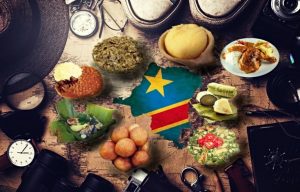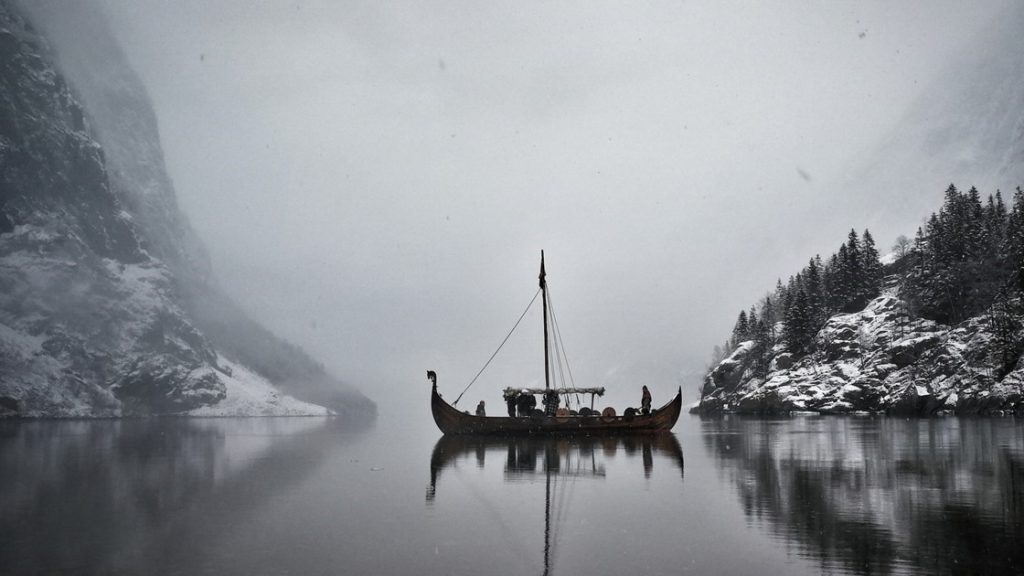Political Map of DR Congo
Democratic Republic of Congo (DRC) is the second-largest country in the African continent occupying an area of 905,567 square kilometers (Reyntjens, 2007). It is also the 4th most populated country in the continent and number fifteen globally. The country was previously called Zaire until 1997 when it was renamed, DR Congo. DR Congo borders nine countries including South Sudan, Tanzania, Angola, Burundi, Uganda, Rwanda, Zambia, Central African Republic, and Congo (Reyntjens, 2007). The country’s capital is Kinshasa which is also the largest city. It is the most diverse country biologically in Africa. It has a mosaic of rivers that
flow via the country’s tropical forests, swampy areas, savanna regions, and dense jungles. River Congo and Ubangi bound the country in the west and several lakes in the east including Lake Albert, Kivu, Edward, and Tanganyika. DR Congo has 10 percent of global animal species and serves to be the most fertile place globally.
DR Congo has the second largest rainforest globally after the Amazon rainforest with its landscape consisting of the Congo Basin to the northern part of the country. The country’s northern part receives the most rainfall in Africa. Lake Kivu’s region has two of the most active African volcanoes; mount Nyamuragira and Nyiragongo. Mount Ngaliema (Mt Stanley) is also found in the region and is the third highest in Africa. It is part of Rwenzori Mountains National Park; a UNESCO World Heritage Site that is 5109 meters tall (Reyntjens, 2007). It has several international airports which include Ndjili International Airport and Lubumbashi Internation Airport which are the largest in the country. DR Congo had a population of more than 89 million people in 2020. Its currency is the Congolese franc. Congolese franc is divided into 100 centimes. Currently, 1 USD makes slightly more than 2000 Congolese francs. The country has numerous local languages. Franc is their official language. The most widely spoken languages in DR Congo are Lingala, Tshiluba, Swahili, and Kikongo.
DR Congo Brief History

The current DR Congo was previously dominated by three kingdoms in precolonial times. The Kongo can be traced to occupy the place in the 10th century, the Loango who flourished in the 17th century, and the Tio. In 1482, River Congo was located by the Portuguese, and commerce especially the slave trade started to be carried and flourished along the river.
In 1880, a Frenchman, Savorgnan de Brazza signed a treaty with the ruler of the Bateke people who were known as Makoko to establish French control in Bakoko’s area of jurisdiction. The land was first names French Congo (Nzongola-Ntalaja, 2006). In 1905, it was renamed Middle Congo. In 1910, Gabdon and Ubangi-Shari were incorporated into the French Colony and were named the Colony of French Equatorial Africa. French colonialists abused laborers leading to the public outcry against the colonialist Congolese started to rebel against them although the native workers continued to be exploited until 1930 (Nzongola-Ntalaja, 2006). During the Second World War, Chad was joined by the colony of French Equatorial Africa to support the Free French cause against the Vichy government. In 1960, Congo gained its independence without leaving the French community and called itself the Republic of Congo.
Alphonse Massemba-Debat became the second president of the Republic of Congo and instituted a Marxist-Leninist government. He was overthrown by Maj. Marien Ngouabi 1968 was sworn in in 1975 for a second five-year term. In April 1977, Col. Joachin Yhombi Opango assumed the presidence=y seat later resigned in February 1979 and was replaced by Col. SassouNguesso.
In July 1990, the one-party system was ruled against by the leaders of the ruling party. Marxism government was renounced after hailing a national political conference in 1991 as a model for sub-Saharan Africa, which DR Congo’s first free and fair elections in1992. The first democratically elected president in the country in 1992 was Pascal Lissouba. He was overthrown by the former Marxist dictator Dennis Sassou-Nguesso. Elections were held in March 2002, and
President Sassou Nguesso was reelected having more than 80 percent of the votes (NzongolaNtalaja, 2006). In July 2009, Sassou-Nguesso was again reelected for a seven-year term.
Communication
The vast territory of DR Congo is extraordinarily multicultural that has about 250 ethnic groups and about 700 distinct dialects. Some of the ethnic groups in the country include the Mongo, Vili, Makere, Furiru, Sanga, Baka, African Pygmies, Luba, Kongo, and Garanganze. And the Chinese people in the country, and many others (Clark, 2008). DR Congo has four national languages. These languages include the Kiswahili language, Kituba, Lingala, and Tshiluba. French is the official language in the country and serves to be the medium of instruction in the government and the education sector. The lingua franca of DR Congo is therefore the French language, Swahili, Kikongo ya Leta, Lingala, and Tshiluba.
DR Congo’s diverse ethnic groups provide the country with rich culture the ethnic communities. The country’s culture has been influenced by their religion and their colonial masters making them common to some other African countries although some of the etiquettes and culture remain to be practiced by the Congolese only (Clark, 2008). Most of the population speaks the French language which serves as the language of instruction although people will also tend to speak the dominant language. People will greet each saying “mbote” in Lingala which means “hello,” and will serve as a greeting that stands alone. The greeting will usually follow an individual’s name, such as ‘Mbote Shaniya’ or ‘Mbote Theresa’ (Ọbádélé, 2020). In Tshiluba, people will greet each other in the morning ‘Betuabu’ to mean ‘good morning’ (Ọbádélé, 2020). In the evening, ‘good evening’ will be ‘Butuku Bulenga’ and ‘dilolo dilenga’ to greet ‘good afternoon’ (Ọbádélé, 2020). In Kikongo, Ọbádéle notes that one will greet the other ‘yenge’ meaning ‘hello (peace) and one will reply ‘yenge, na ngeye’ to mean to mean ‘to you, and you,’ and the unending list.
Common cultural practices will tend to be found in the DR Congo region despite the diverse communities in the region. Men will often enjoy socializing in some temporary built huts in the forest meant to offer refuge in rainy weather during the hunting practices. The common practice practiced when greeting is shaking hands which were absorbed from the French culture. The other common form of greeting that surpasses handshaking is shaking heads. Congolese men will often greet each other by rubbing their heads against each other sideways.
Food and Recipe

Foods and recipes in DR Congo are different in different regions in the country. The culinary specialties of the land are spicy copious, warm, and rich in flavor. Etiquettes are also followed when eating in the Congolese land. These etiquettes include eating using only the right hand, and keeping the left hand away from the bowls or serving items, and the youngest individual will hold a communal bowl’s lip with his/her thumb and the index finger of the left hand. Older people will be the first to eat in the order of men first followed by the women and the children respectively. One cannot often start to either drink or eat till one oldest man is
served and has started taking his meal. Some of the common meals in the country include the Le Saka, Mossaka, Madesu, Fumbwa, and the Liboke.
Le Sakai is a popular and national food in the Congolese region. The dish consists of cassava leaves, peanut butter, smoked fish, and palm oil. Fresh cassava leaves are boiled, pounded, simmered, and decorated with different condiments, spices, or veggies. The dish can be accompanied by plantains, kwanga, or fufu. It can also be taken with either smoked fish or any other piece of meat that includes mutton, beef, or any preferred meat. The taste of the dish depends on the one who has cooked it. People believe that an exceptional taste of the meal will depend on the “hand” that gave and received the “formula” to prepare it.
Mossaka is a traditional dish from DR Congo that is also popular in countries abroad. It is made of roasted chicken that is cooked in a thick sauce got from palm nut extracts. It is commonly referred to as chicken with ‘Moambe.’ Maombe is got from ‘mwamba’ that is designated from mashed palm nut. Maombe provides the meal with creamy reddish sauce to decorate garlic, fresh tomato, onion, and chili. The meal is taken from some classics such as plantains, cassava, rice, or an individual’s favorite.
Madesu is a bean dish that is prepared by cooking the beans first with water and drying them later in fried palm oil or peanut oil that is concentrated with tomato sauce. One can add one’s choice of some dried fish, ham, and beef or chicken. The dish can then be eaten with some steamed cassava or rice. Fumbwa and Li boke are other popular dishes in the region. Fumbwa is normally hand-hacked leaves that are dried in the sun as their traditional method of preservation. The leaves are served with either semolina, fish, or fufu. Li boke is a practical and economical dish among the Congolese people where (wild leaves) Li boke veggies, chicken, or fish is boiled in those leaves. Using this method of using the leaves often replaces the traditional pots used by the Congolese people.
Artifacts
The country’s artifacts have been taken by their colonial master, the Belgians, during the colonial period although the DRC president has been claiming for the return of these artifacts (Hayden, 2022,). The Belgians have been keeping thousands of African artifacts in their country, and according to (Hayden, 2022), the king of Belgian has started to return more than 80,000 DR Congo artifacts to their native country looted by the Belgians during the colonial period. The National Museum of DRC was also created in the country to preserve the country’s artifacts. The museum was officially opened in 2019 with the construction being funded by a Korean Agency. Denbow also finds Congolese artifacts from the Loango Archaeological Project (Denbow, 2015). The project discovered various Kongo artifacts that are known to be among the first known western coast of equatorial African cultural chronologies.




